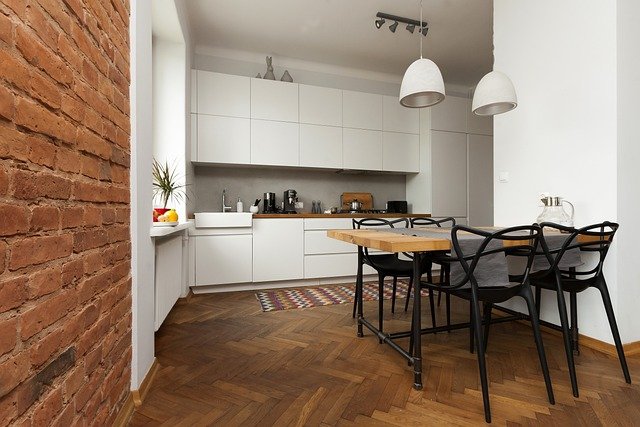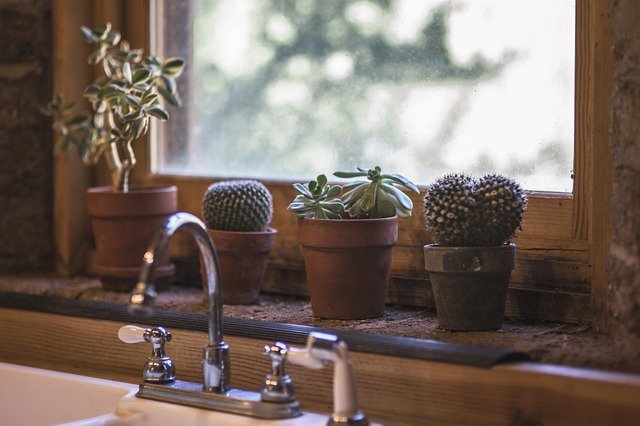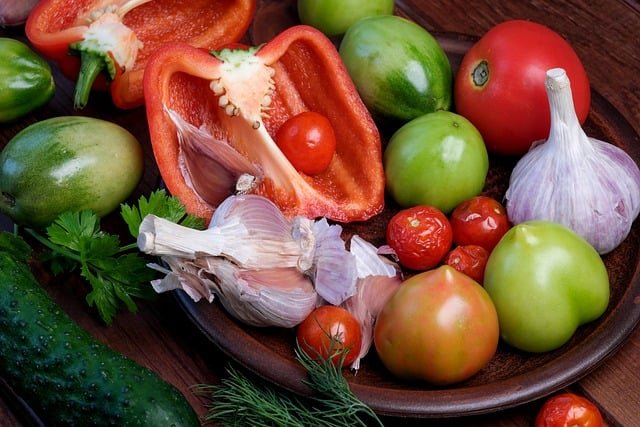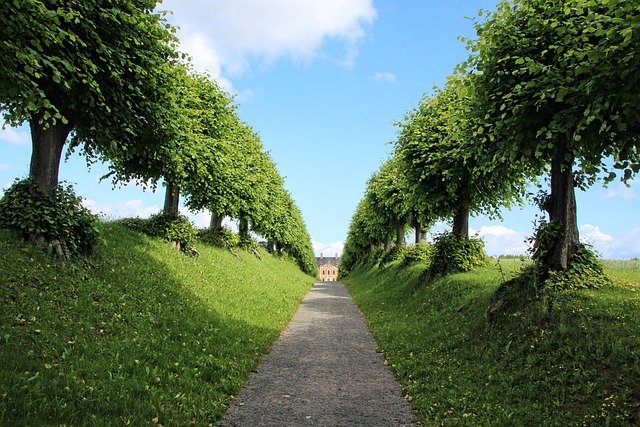Modern flower bed ideas
Raised beds are an excellent option for any garden situation, especially if you only have a small space. Raised beds are often more productive than buried beds because the soil is less compacted, better drained, and warms up earlier in the spring, meaning plants start growing earlier in the season. Raised beds are also easier to maintain, especially for people with limited mobility, and generally less pressure from perennial weeds. The main disadvantages are that they require frequent watering and have a high initial cost of construction. Those drawbacks aside, raised beds can be an excellent option for anyone interested in horticulture.
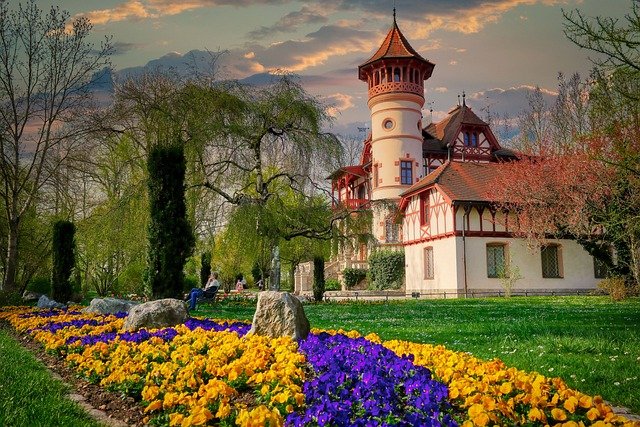
Ideas and designs of flower beds.
Once you’ve chosen a site, it’s time to create the flower bed. Here are some best ideas to spark your imagination.
Were you looking to make a statement in the front of the house? Wrap a small flowerbed around your mailbox, and add colour to your front hallway, under a tree, or around the base of your front porch.
Get geometric with a perfect square, rectangular, circular or triangular bed.
Focus on tall or dense plants to block unattractive garden features such as air conditioners, trash cans, pool heaters, or storage sheds.
Lawn cleaning and construction of flower beds.
If you don’t already have bare soil, you’ll want to remove the grass before planting your flowers. After construct the outline of your new flower bed with spray paint or white flour, there are two main basic ways to remove the grass inside your lines.
Dig up the existing turf.
Mowing the lawn can be a daunting task. Use a shape shovel to remove a section of sod from the centre of the planned bed, then remove the sod by tapping the shovel (a hoe will also work) under the edges of the sod. Then lift and remove the grass. After removing the sod, you can prepare the soil for planting.
Create a flower bed without digging.
Removing grass without digging is a long but easy way. Cover the entire area of your future pot with several overlapping sheets of newspaper. Lay the paper six pages deep, then cover the newspaper with several inches of rich soil or compost. Well. In the coming months, the buried grass will die, and the newspaper will start decompose while adding nutrients to the soil. For getting best results, keep the area covered for up to one year before planting.
After removing the sod, outline the area with a garden edging made of plastic, stone, brick or wood. Some whimsical materials you can use for edging include glass bottles, large seashells, or decorative metal fencing.
Create a raised flower bed.
There are several ways to do this. You can use wooden boards cut to the desired length. This allows you to build any shape or size you want. But if you prefer the simpler solution, there are flower bed kits that give you everything you need and are easily assembled without the need for a saw or hammer. Most kits create fairly small squares or rectangles.

If you are building your raised flower beds on top of your existing lawn, cover the lawn with several sheets of newspaper, cover the paper with a good quality potting mix, and finish with a layer of compost. Suppose you want to build on concrete or another hard surface. In that case, you first need a protective underlayment of plywood, garden cloth, or heavy-duty plastic sheeting to prevent soil from creeping up from the raised bed discolouring the concrete.
Fantastic flower bed ideas to recreate in your space
1. Create a contemporary look with a black background
The background of your flower bed can have a big impact on the overall aesthetic of the space. Therefore, it is worth including in your plans to get a long-lasting look.
An very easy way to do this is to focus on wall or garden fence colour ideas and consider how to use them to enhance your plantings. For example, this charcoal-coloured fence allows the tonal-coloured plants in the foreground to pop and gives the scene a contemporary feel.
We love the scheme’s mix of textures, including sage, verbena bonariensis, herbs, and hydrangea paniculata.
2. Use flower beds to cover an area
Whether planted in raised garden beds or directly in the ground, flower beds can make excellent garden dividers. Here, alliums sway gracefully under leafless deciduous trees, and evergreen shrubs above they are ready to bloom.
Muscari adds additional visual interest to the grass in its vibrant blue colour.
3. Mix hard flowers with soft grass
You can cram a few different flowers together for a spectacular display. The above example shows how two variants can be so effective.
Determine the size and shape of your flower beds.
Modern garden with flower bed ideas and curved patio.
Although flower beds are traditionally found at the edges of gardens, there are no rules about their placement, and they can be any shape or size.

To start planning, use string and some pencils to “draw” the lines of your flower beds. You want them deep enough to add different textures to create depth, but you still want access to the plants. If you have the space and want friendly, deep, lush borders, consider adding pathways or some strategically placed rocks so you can access all the plants.
Remember that the edges can be straight. If you want a more rustic and natural feel, orient the beds, as some plants stand out more in the garden than others. This is a good idea if you have a small garden, so you want to keep your flower beds narrow, and you can move some larger plants outside to add the illusion of more depth.
4. Choose a cohesive colour scheme
Garden by Cleve West
Treat planting a flower bed as if you were decorating a room within your home—you want to create a cohesive colour scheme. Imagine if you want a light colour layered with tones – this monochromatic look can work well in a modern garden, meaning stick to white flowers and leaves.
Or you can go for a more diverse scheme with complementary colours like red, pink, and purple. Choose colours opposite the colour wheel, such as red and blue or yellow and purple, for a bolder, less formal look.
6. Stay wild for some English garden fare
Estate
The secret is to be flexible with your plantings; you want the beds to seem a little bit haphazard if you want your flower bed ideas to give your garden a charming English country home atmosphere.
Avoid obvious repetitions and space plants close together, so they intertwine as they grow. Combine soft colours and create layers with plants of different heights. If you need help choosing flowers, choose old-fashioned traditional flowers like roses, foxgloves, hollyhocks, and delphinium.
For more tips on choosing plants for a garden, check out our expert guide.
7. Mix height and texture to add depth
Modern garden with green borders and sofas.
No matter which look you choose, a mix of plants of different heights and textures will add interest to your flower beds. If you’re planning an architecturally modern garden, mixing grasses, bamboo, and ferns will bring that texture. Before planting, think about the total height your plants will grow and be sure to give them plenty of space.
As a general rule of thumb, if you opt for an island flower bed, plant the tallest plants at the back or centre of your bed, then get smaller as you get closer to the edges. Of course, you don’t have to follow this strictly; you don’t want to level a bed too formally.
8. Add vibrancy to your balcony flower beds
Terrain Balcony Garden by Nicola Hale at Chelsea Flower Show 2021
At first, small balcony gardens seem a bit restrictive, especially regarding planting. There’s no soil to dig up and make into borders or flower beds, but you can still create a beautiful display by using thin, lightweight pots around the perimeter.
In this display garden, tall pots are filled with beautiful bee-friendly options, including helianthus, salvias, and asters. In such a small space, it’s wise to stick to a minimal colour palette, like the purple and yellow hues used here; this will make the area feel calm and considered instead of chaotic or chaotic.
Planting is also a great way to increase privacy, as it acts as a natural screen.
9. Combine flowers with decorative vegetables
Alan Williams Chelsea Parsley Garden 2021
If you love a more informal and colourful look to your garden, a potpourri garden might appeal to you. This type of planting combines colourful flowers with attractive herbs and vegetables, resulting in a delicious mix that is both beautiful and practical.
For example, think ornamental kale and rainbow chard with edible flowers and fragrant rosemary, mint (planted in a sunken pot), or perhaps chives with their pink pom-poms.

